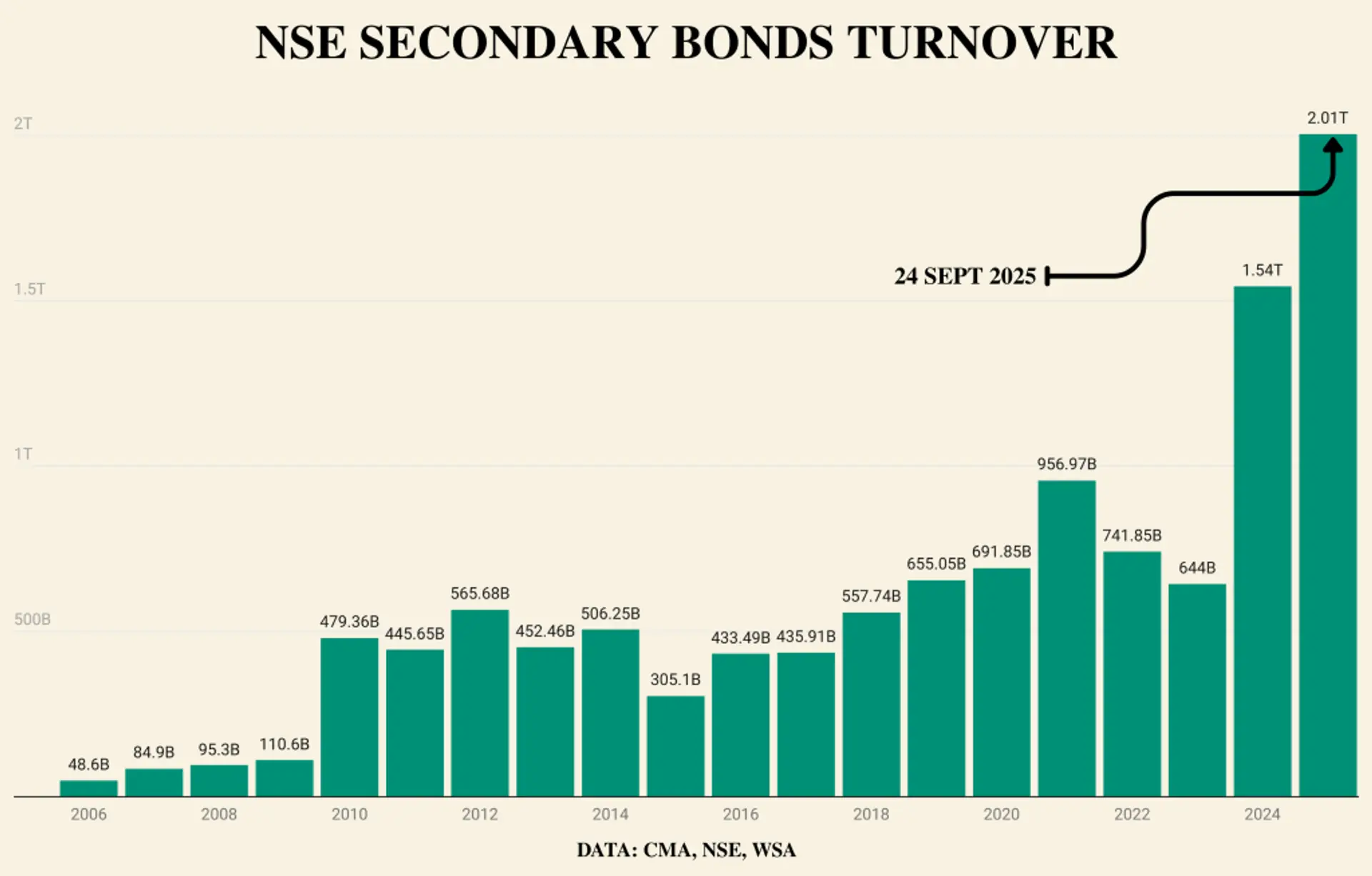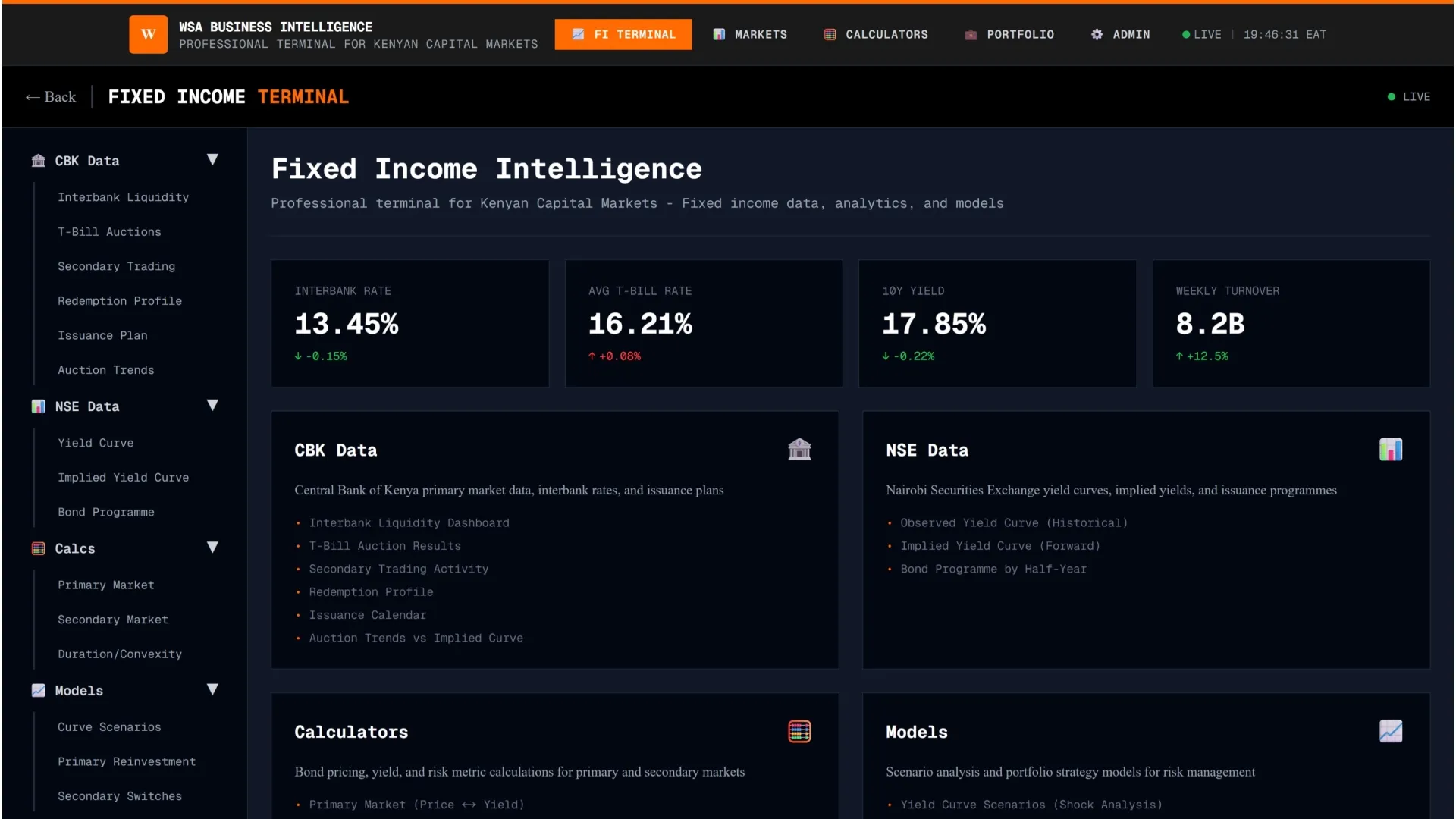The Nairobi Securities Exchange (NSE) secondary bond market crossed the KSh 2 trillion turnover mark as of September 24, 2025, setting another milestone in Kenya’s fixed-income trading.
- •This is the first time the market has reached such a level within a single year, surpassing the KSh 1.544 trillion full-year record of 2024 by over 30%, with three months still to go.
- •The market has added nearly KSh 500 billion in turnover in just two months since hitting KSh 1.55 trillion on July 21, 2025.
- •Average monthly turnover now stands at roughly KSh 220 billion, placing the market firmly on track for KSh 2.6–2.7 trillion by year-end if momentum continues.
A look at annual NSE bond turnover shows the sharp rise: after staying significantly below KSh 1 trillion all years before 2020, activity jumped to KSh 957 billion in 2021 and reached KSh 1.54 trillion in 2024 before now surging to KSh 2.01 trillion in Sept 2025.
Annual NSE Bond Turnover (2006–2025)

*2025 figure is year-to-date.
Weekly CBK data reflects this strength despite volatility: bond turnover doubled in the week ending August 21 (+100.25%) and grew another 36.7% in the week ending September 18. This suggests strong institutional and retail flows underpinning the record activity.
Key Drivers of the Surge
- •Auction Oversubscriptions: Tap sales and reopenings in August and September saw subscriptions ranging from 200% to 400%. For example, the August tap of 15- and 19-year infrastructure bonds drew KSh 207.5 billion in bids against an offer of KSh 50 billion (414.9%).
- •Retail Investor Growth: Retail holdings, including Saccos, self-help groups, and individuals, have more than doubled in two years to above KSh 800 billion, supported by digital access through the CBK’s Dhow CSD platform.
- •Premiums on High-Coupon Bonds: Infrastructure bonds issued in 2023 and 2024 with coupons between 14.4% and 18.5% remain heavily traded, with price premiums of up to 22%.
- •Short-End Liquidity Demand: Heavy oversubscription of the 364-day T-bill highlights investor appetite for short-term paper, but the bulk of secondary flows are still concentrated in long-tenor IFBs.
Market Outlook
Kenya’s bond market momentum is also supported by macro and policy factors. In August, S&P upgraded Kenya’s sovereign rating from B- to B, citing improved liquidity management. The government is considering bond buybacks and longer-dated issuance to manage maturities, with KSh 495 billion falling due in 2025 and KSh 822 billion in 2026.
With secondary trading volumes already rewriting records, the NSE bond market is now positioned to end 2025 with the strongest turnover in its history, reinforcing Kenya’s position as one of Africa’s most active fixed-income markets




